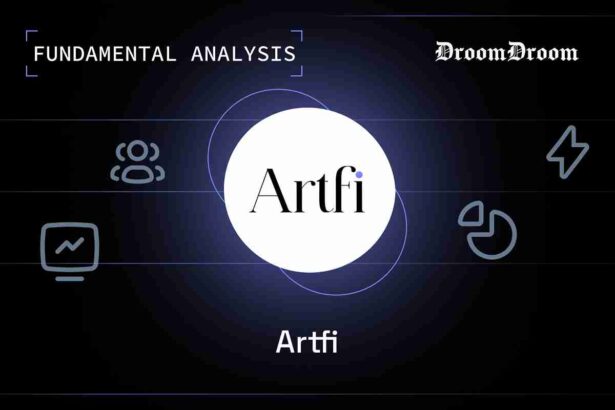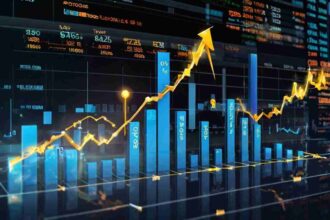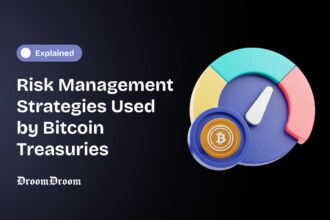Artfi fundamental analysis will help you learn about the significance of Artfi as a company for democratizing investment in high-value artwork.
- What is Artfi?
- How Artfi Works?
- Selecting World-class Art
- Acquiring Art that has Impeccable Provenance
- Tokenization of Physical Art into Convenient and Affordable Pieces
- HODL and Trade
- Selling the Art after a Select Period of Time when the Value has Gone Up
- Artists
- Digital Collectors
- Buyers
- Competitive Edge
- Technologies that Artfi has Leveraged to Democratize Art Investment
- Tokenomics
- Impact and Benefits of Artfi: Transforming Art Market through Technology and Accessibility
- Increased accessibility
- Improved Liquidity
- Impeccable Provenance
- Fair Compensation
- Diversifying Portfolios
- Reducing Intermediaries
- Founding Team of Artfi
- Artfi Partners and Advisory Board
- Example of Artfi’s Art Selection: The Works of Sacha Jafri
- Conclusion of Artfi Fundamental Analysis
Democratization of art investment is a unique proposition by Artfi that aims to foster widespread participation in the largely elusive high-end art market.
The Artfi fundamental analysis will detail industry demographics, tokenomics structure, partnerships, investments, features, roadmap, and trends around the art democratization project.
Artfi crossed the $100 million valuation on 26th July 2022, when it raised $3.26 million in a private round. As we write this fundamental analysis, Artfi continues to rapidly expand its mission to democratize the $1.7 trillion fine art market through blockchain technology.
For the longest time in history, collecting art has remained a privilege for the wealthy. Artfi employs tokenization, fractions, and decentralization to allow anyone to invest in high-net artworks. This paradigm shift has disrupted how retail investors collect art and increased the avenues of revenue generation for artists.
Stick to the end of the Artfi fundamental analysis to learn more about Artfi and the high-end art business.
What is Artfi?
Artfi is a fine art technology platform that splits ultra-expensive artwork into convenient and tradeable NFT units.
As the world’s first platform to build ordinals for fine art, Artfi is building on the BRC-20 token standard to leverage Bitcoin’s immutability features and grant investors 100% ownership of their art.
A nonfungible Token (NFT) is a unique token on the blockchain that cannot be replicated, replaced, or subdivided. In art, a nonfungible token represents ownership and certifies authenticity.
Artfi goes beyond to subdivide ownership of an art using fractionalization (dividing an asset into smaller units of NFTs representing ownership) to sell a costly piece of art to multiple individuals through collective investment. Hence, investors get a unique and crème de la crème opportunity to engage in exclusive blue-chip fine art investments to diversify their portfolios.
Discover ‘how Artfi works‘ in the next section of this Artfi fundamental analysis.
How Artfi Works?
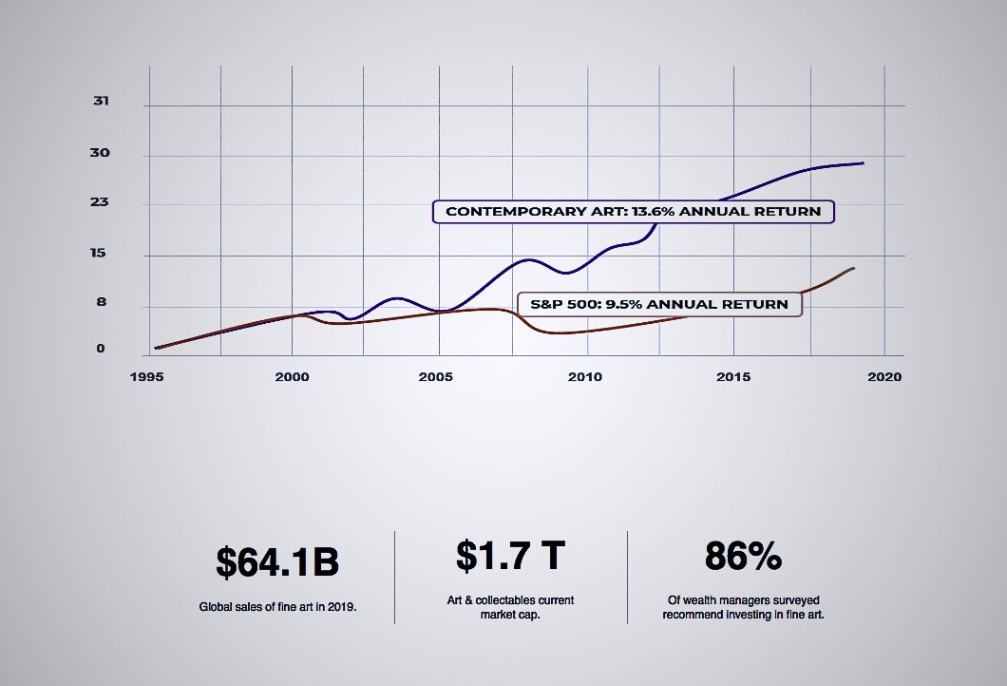
Artfi has found financial success through its art business model by following a simple 5-step strategy that involves:
Selecting World-class Art
Arfi’s team profoundly understands the factors influencing an art’s valuation. Artfi has learned to curate and tokenize a world-class art collection by integrating its selection process with these factors.
Market research, provenance, and historical significance play an essential role in determining the value of an artwork. Artfi ensures that such considerations are factored in when selecting and documenting a piece. Another important consideration might be questions such as:
- Who previously owned the art?
- Where has the art been exhibited in the past?
- What is the art’s present condition?
- Is the art’s proof of ownership well documented?
Acquiring Art that has Impeccable Provenance
The last question on the above bullet list is central to Artfi before acquiring a work. The company only acquires art with unrivaled provenance (proof-of-ownership). It is essential for a company or investor to factor in provenance because ownership history hugely impacts the value of the piece.
Liquidity is also an essential consideration before acquiring a piece of art. Investors, too, should care about some of these factors. For example, works of art by prominent artists may be costly and more inclined to retain their value. Thereby guaranteeing high liquidity for major artworks. On the other hand, upcoming artists’ artwork may provide high potential for growth but need more liquidity and carry a significant risk of shrinking valuation.
Tokenization of Physical Art into Convenient and Affordable Pieces
After selecting and acquiring a work of art, Artfi tokenizes the art into multiple units of NFTs.
Afterward, the company lists the these units NFTs on its marketplace and invites the public to invest. This enables multiple investors to own a single piece of art. However, Artfi determines the number of units making each artwork. The number of pieces helps determine the price for each nonfungible token.
Furthermore, Artfi displays its selection of artworks at The Artfi Foundation museum in Dubai, a no-profit public trust company that preserves and showcases works of art on behalf of investors.
HODL and Trade
As we’ve seen in the Artfi fundamental analysis, the company has a unique real-world assets business model that aims to showcase physical art, tokenize it, and sell it as unit of NFTs.
Investors have the choice to hold or trade their portfolios whenever they want. Artfi guarantees this by delivering an open marketplace that is open 24/7. Furthermore, investors can also earn royalties by staking their collection. Artfi generates these royalties by enabling the trading of staked NFTs on the secondary market.
Selling the Art after a Select Period of Time when the Value has Gone Up
Artfi’s final step is the big sale. The company sells the entire piece of art at a given period in the long term once the market conditions are favorable.
Artfi engages the community and seeks permission to sell the artwork to ensure fairness and complete democratization. Once the company sells the art, holders can redeem their Nonfungible tokens for the generated revenue.
Who Needs Artfi?

The next section of the Artfi fundamental analysis will split the community into Artists, Collectors, and Buyers.
Artists
Artfi believes every artist’s dream is for more people to see their work. The project features prominent and high-budget artwork. The only requirements are quality and impeccable provenance.
There are several things to note with provenance. Artfi only picks art whose sellers have previously had the chance to consign the work through a private sale or an auction.
Artists work via a consignee __ a person to whom the artist or consignor gives their work to sell on their behalf. In the traditional art business, the consignee receives a commission after selling the work. Artfi works like a consignee and usually generates revenue by taking a commission.
According to the Artfi whitepaper, the consignor takes their proceeds once the company sells the 10,000 units of NFTs. Usually, Artfi takes a relatively lower commission than the traditional art market’s auction houses commission.
Digital Collectors
Digital collectors invested in high-net-worth artworks of $1M+ market value. The digital collector also gets the unique opportunity to experience their Artfi collections at a physical museum in Dubai.
Despite offering highly costly artwork, Artfi has eliminated the investment barrier by enabling anyone to own a piece with as little as $1,000, even if the work of art costs a million dollars.
Buyers
An art buyer on Artfi could be anyone from a museum, art gallery, digital collector, or NFT trader.
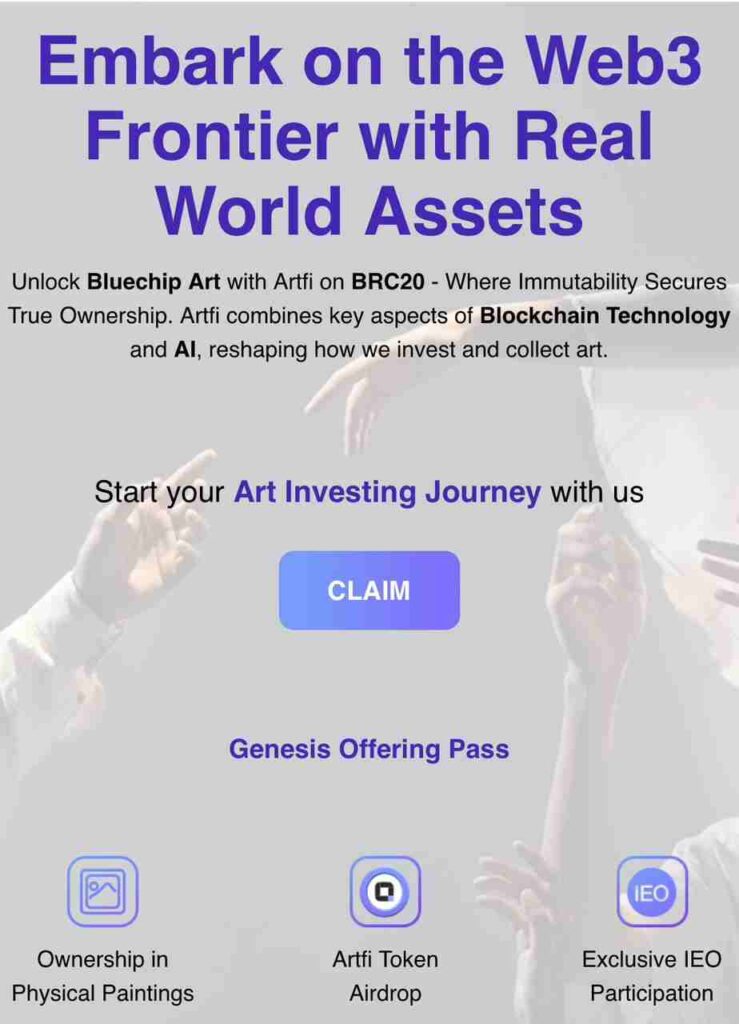
Artfi buyers gain membership into an exclusive community where they can access multimillion blue-chip works of art.
Meanwhile, in the community, these buyers have the unique advantage of purchasing these lucrative artworks at an affordable price.
The membership also unlocks generous reward packages and price discounts. Buyers can sell their art pieces at the secondary market if they have to liquidate their positions.
Many buyers who come to Artfi seek artworks with high provenance from the time of creation or discovery to the present.
Proceed to the next section of the Artfi fundamental analysis to get a picture of Artfi’s competitive advantage.
Competitive Edge
What separates Artfi from competitors across traditional and digital art businesses?
One of the most significant propositions by Artfi is to democratize the world’s best works of art. Most of which have been the privilege of a select few wealthy individuals. This model has enabled retail investors and ultrawealthy individuals to own a single piece.
Data suggests the art market has an estimated global value of $1.7 trillion and records approximately $65 billion in annual transactions.
As you can see, this is a colossal asset class. Artfi aims to bring even more efficiency, eliminate barriers to entry, and attract more retail investors to the art market.
Historically, only ultra-wealthy individuals have managed to buy and sell high-value artworks. Hence, the art market is big yet concentrated on only a few individuals and businesses. Artfi is changing these dynamics and hopes everyone can participate in the art market at the convenience of their devices and still earn royalties/commissions.
Artfi believes the market will grow exponentially if more people can afford world-class art. Fractionalizing an art piece worth $10M into 10,000 units of NFTs and selling each piece at $1,000 allows everyone to participate in the business.
To increase reliability, Artfi ensured its marketplace would have high liquidity so that anyone could quickly cash out as soon as needed. Cashing out on the secondary market generates profit for a piece. Furthermore, investors may still wait for Artfi to sell the art at a suitable time and receive their proceeds.
Artfi has also forged a market advantage with its careful selection. According to the whitepaper, the company selects artworks with maximum appreciation potential. In an industry where blue-chip masterpieces have historically outperformed the S&P 500, Artfi’s world-class art selection should appreciate and generate ROI over the long term.
The next section of the Artfi fundamental analysis highlights Artfi’s technology stack.
Technologies that Artfi has Leveraged to Democratize Art Investment
Blockchain
Blockchain technology is Artfi’s parent technology. The technology has enabled Artfi to tokenize real-world art assets into Nonfungible tokens (NFTs). These assets are now tradeable since these NFTs represent uniqueness, and holders can transfer ownership from one person to another. Artfi also has its native token, $ARTFI.
Stick to the end of the Artfi fundamental analysis to understand the tokenomics behind $ARTFI.
Superinflated JPEG Nonfungible tokens have a tradition of crashing. The reason behind this phenomenon is that these NFTs lack real-world value. Unlike these JPEG NFTs, Artfi has launched NFTs representing a real-world asset class.
Asif Kamal, the founder and CEO of Artfi, says they discovered they could break down a lucrative artwork into a collection of thousands of NFTs. Each NFT would represent a unit ownership in the artwork. Meanwhile, the total cost of all the NFTs would represent the artwork’s total value.
Discover how you can share a Non-fungible Token through our beginner’s guide to Fractional NFTs.
Through the power of democratization using NFTs, Artfi is guarantees a good return on investment.
Artificial Intelligence
The Artfi Foundation Museum also pioneered an AI initiative that involves incorporating Artificial Intelligence to generate artist avatars driven by AI. These avatars will embody the physical presence of the most celebrated artists in history.
Museum visitors will have the rare opportunity to participate in immersive and enlightening dialogues with these realistic avatars, acquiring distinctive insights into the artists’ lives, inspirations, and creative methodologies.
Moreover, Artfi leverages artificial intelligence to power its decentralized NFT marketplace with valuable decision making insights. The revolutionary marketplace for tokenized art NFTs will provide a primary and secondary market for fractionalized art assets.
Let’s dive into the tokenomics of the $ARTFI token in the next section of this Artfi fundamental analysis.
Tokenomics
$ARTFI is the native token of the Artfi ecosystem and runs on the ERC-20. Key features of the ARTFI token include swift transaction speeds and relatively low transaction fees. Artfi users can also stake their $ARTFI holdings to secure the network. Additionally, Artfi’s art consignment business model will accrue value into the Artfi token as the business grows in profitability.
Artfi splits the trading fees between itself and $ARTFI holders as a compensation mechanism. Artfi employs a deflationary mechanism through its burn program. The platform takes its share of the trading fees and burns 30% out of circulation to strengthen $ARTFI’s market value.
Artfi users will also pay for art pieces on the marketplace using the $ARTFI token. However, it’s important to note that $ARTFI market performance does not affect the price performance of Artfi artworks.
Token Distribution
Artfi tokens will have a total fixed supply of 1 billion tokens. The allocation will be as follows:
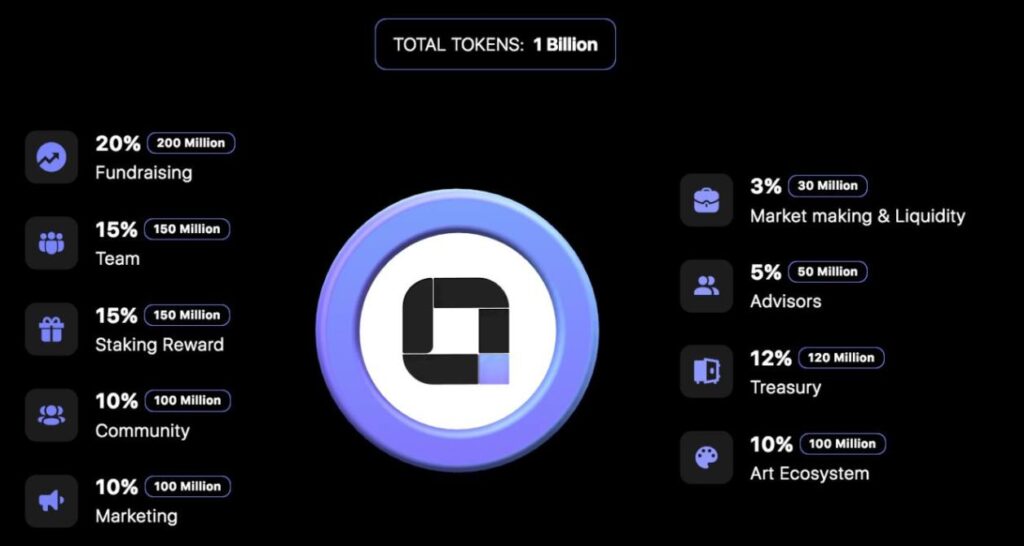
Impact and Benefits of Artfi: Transforming Art Market through Technology and Accessibility
Let us discuss the benefits of the platform in this section of the Artfi fundamental analysis.
Increased accessibility
Artfi has leveraged blockchain technology to eliminate entry barriers to blue-chip art investment. Thereby fostering an inclusive art marketplace where anyone can invest without the physical or cost barriers.
Improved Liquidity
Tokenizing costly artwork enhances their liquidity. At the same time, improved liquidity facilitates reliable and efficient transactions.
Impeccable Provenance
The blockchain is the best way to achieve impeccable provenance for RWAs. Through ARTFI’s decentralized ledger, investors can verify the history of an art’s original, time of discovery, and change of ownership. This is a valuable feature for combating fraud and forgery and increasing trustworthiness across the art market.
Fair Compensation
Artists, art consignees, investors, and traders receive fair compensation through automatic royalty payments and equitable distribution of proceeds. Investors also have the opportunity to increase their revenue by staking their NFT holdings.
Diversifying Portfolios
Artfi enables investors to diversify their art portfolios by owning fractions of different artworks. Executing the blockchain has also given birth to digital art forms, a niche that has historically remained ignored in traditional art markets.
Reducing Intermediaries
Executing blockchain across art has reduced reliance on intermediaries when selling artworks. Hence, investors can still access prominent artworks without visiting galleries and auction houses. On the other hand, artists can still sell their work via a digital marketplace without paying extra listing fees. Besides, Artfi takes relatively lower commissions compared to traditional auction houses. Hence, it cuts down the overhead costs of buying or selling artwork.
Founding Team of Artfi
Asif Kamal
Asif Kamal is the founder & CEO of Artfi, where he leads a brilliant team of blockchain, art, and business experts. A prominent art connoisseur and businessman who also founded Alturaash Art. Alturaash is an international art house located in New Delhi and Dubai.
Ali Raza Beig
Ali Raza Beig helped co-found Artfi alongside Asif Kamal. Ali Raza also runs the most prominent creative agency in the Middle East, BoredPuma.
Artfi Partners and Advisory Board
Artfi has a trusted think tank of advisors and a steering committee on its advisory board. Find out about them in this section of the Artfi fundamental analysis.
The Advisory Board is Artfi’s strategy to scale its art tokenization business collaboratively by engaging with external advisors and partners. Here are the prominent individuals that make up the Artfi advisory board:
- Franchise Gury is a globally renowned intellectual property rights expert.
- James Bernard – Bernard is a prominent non-executive board member across several international companies, a global serial entrepreneur, and a tech investor.
- Raza Beig – Beig is also the co-founder of Artfi and sits on the advisory board with his multi-sector expertise in running global technology companies.
- Her Highness Sheikha Fend Faisal Al Qassimi – Apart from sitting on the Artfi advisory board, Her Highness Sheika Fend Faisal is the CEO of the Paris London New York Events & Publishing (PLNY), an accomplished philanthropist, architect, entrepreneur, artist and author.
- Ajeet Khuran – Khuran is a prominent and influential figure in the tech sector and has served in several companies as a non-executive board member. He currently runs Reflexica Studio as CEO and is a former CEO of Zebpay.
- Faisal Zaidi – Faisal brings a wealth of experience in marketing as the Chief Marketing Officer and co-founder of Crypto Oasis and Association Initiator at the Crypto Valley.
- Punit Agarwal – Punit is the CEO and founder of Cryptorelief and a member of Artfi’s advisory board. Mr. Punit also founded KoinX, a web3 solution that tailors cutting-edge crypto tax and accounting solutions.
Learn more about Ajeet Khuran’s work with Reflexical on this DroomDroom report.
Find an example of the caliber of artists that Artfi has listed in the next section of the Artfi fundamental analysis.
Example of Artfi’s Art Selection: The Works of Sacha Jafri
One of Sacha Jafri’s art was re-sold for $3.5 million in 2019. Over a quarter of a decade of his career, Sacha Jafri has exhibited across prominent museums and art institutions. The artist also became history’s youngest to have a Retrospective Museum World Tour when he was 20. He has also been called the most bankable art investment and the Pioneer of Magical Realism.

The artist joined NASA in celebrating its 50th anniversary towards the close of 2023 by sending a Jafri creation to space. The piece entitled “We Rise Together with the Light of the Moon” was sent to space on 8th January 2024 and has broken records by becoming the world’s first art to launch to the moon.
Visit the Artist’s Page for a picture of his other artistic works on Artfi.
Conclusion of Artfi Fundamental Analysis
We’ve reached the end of the Artfi fundamental analysis and the start of your journey into the world of high-end art investment. With Artfi, anyone can step into the shoes of the ultra-wealthy by owning a piece of the world’s most coveted artwork.
With decentralization, blockchain provenance, and unlimited liquidity, Artfi wants everyone to partake in the lucrative art market with as little as $1,000 for an art NFT. This is not just another JPEG NFT that will shrink in value after a fortnight. Artfi has curated a portfolio of high-end art pieces by some of history’s most respected artists and represented them as 10,000 NFTs on the blockchain. Owning any of these NFTs means 1 out of 10,000 ownership rights in the physical art. According to Artfi, the physical artworks are stored and available for exhibition at the Artfi Museum in Dubai.
Integrating blockchain technology and nonfungible tokens is the most recent disruption in the art business. Artfi guarantees provenance and authenticity to every investor who buys a real-world art piece via the Artfi marketplace. Artfi has eliminated fraud, barriers to traditional art investment, forgery, and copycats through blockchain technology.
Blockchain technology secures an immutable record of the artwork’s provenance on a decentralized ledger; the blockchain also enables Artfi to tokenize and fractionize an expensive artwork to make each piece affordable to all investors. Furthermore, the blockchain has allowed digital art collectors to engage with traditional and physical art (in its digital version). However, these digital versions still represent a co-ownership in the real-world physical art asset.
The evolving relationship between art, technology, business, artificial intelligence, and decentralization is set to amplify Artfi’s long-term roadmap.
